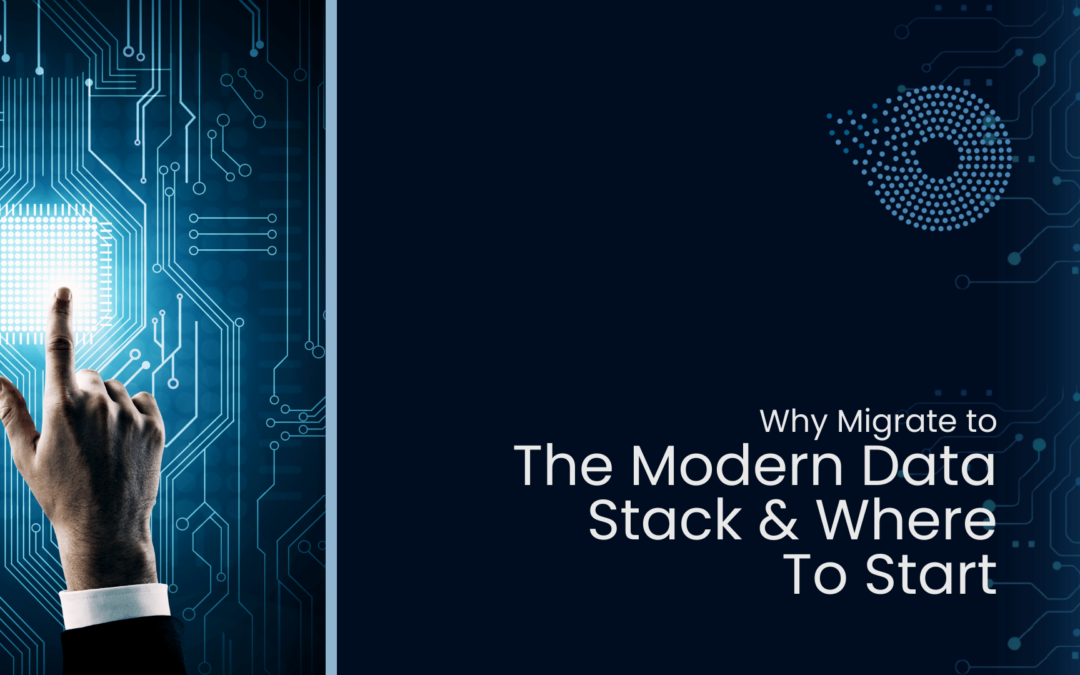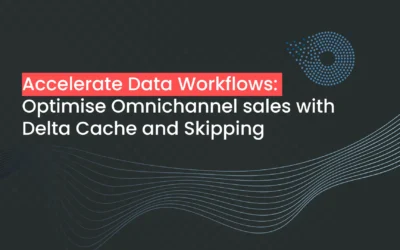Businesses today collect huge quantities of data every day in our data-driven environment. 90% of the world’s data, according to IBM, has only been produced in the previous two years.
However, many businesses need help using outdated data stacks to manage and utilize this data effectively.
Recent research indicated that 75% of businesses claim that their present data infrastructure cannot handle the amount, velocity, and variety of data that will only increase.
Modern data stacks play a role in that. In this blog article, we’ll look at the advantages of switching to a modern data stack and offer advice on how to get started.
What is Modern Data Stack?
A modern data stack is a group of technologies that synchronize to help organizations get the most out of their data.
Data collection, storage, processing, and analysis are often done using various tools, platforms, and services.
Modern data stacks are designed to be flexible, scalable, and agile so businesses can respond quickly and successfully to changing data needs. Cloud data warehousing options, integration tools, cloud-based data storage, and business intelligence systems are frequently included.
One of the main benefits of a modern data stack is its capacity to provide businesses with a consistent, comprehensive picture of their data. They can then make better selections based on accurate, current information.
Also, it gives businesses the adaptability and agility they need to quickly adapt to changing customer demands and data sources.
Key Advantages Of Modern Data Stack
Businesses striving to gain value from their data might profit greatly from the modern data stack.
-
Scalability and Flexibility
Modern data stacks are created to be scalable and versatile, enabling businesses to react quickly to shifting data transformation requirements.
A modern data stack may easily scale to meet demands as data quantities increase without requiring costly infrastructure upgrades.
-
Integration
Businesses may connect to and integrate data from various sources thanks to the strong integration capabilities offered by a modern data stack.
Because of the unified perspective of data made possible by this, data administration is less complicated, and organizations are able to make better decisions based on detailed, timely insights.
-
Speed and Efficiency
Businesses can process, analyze, and visualize data more rapidly and effectively with the help of a modern information stack.
It is especially crucial in today’s fast-paced corporate world, where choices must be taken immediately based on precise data insights.
-
Increased Data Quality
Businesses can use a modern data stack to automate data cleansing and transformation processes and improve the quality of their data migration.
Thus, businesses may be able to make better decisions based on accurate, consistent, and reliable data.
-
Reduced Costs
Businesses can save money by utilizing a modern data stack less frequently for manual data administration and analysis.
Also, cloud-based solutions may reduce the need for costly infrastructure because they are frequently more affordable and require fewer maintenance costs.
-
Competitive Benefit
Businesses can gain a competitive edge by employing a modern data stack to extract insights and make data-driven choices faster and more precisely than competitors.
Modern Data Stack Tool Examples
Today’s market offers a wide range of modern data stack products, each created to address a particular area of data management, storage, processing, and analysis. Here are a few illustrations of modern data stack tools.
-
Cloud-based Data Storage
Thanks to services like Amazon S3, Google Cloud Storage, and Microsoft Azure Blob Storage, businesses now have a flexible, scalable, and affordable option to store their data.
These solutions may be accessed and managed from any location and are built to handle huge amounts of data.
-
Data Integration
Data from multiple places is connected to and integrated using Talend, Stitch, and Fivetran.
By automating the data transformation process, these systems decrease the complexity and time needed for human integration.
-
Data Warehousing
Businesses can store and analyze data in one place using Snowflake, Amazon Redshift, and Google BigQuery.
These systems include quick, effective querying and are built to manage big amounts of data.
-
Business Intelligence
Businesses can use Looker, Tableau, and Power BI to get robust analytics and visualization tools.
These technologies allow companies to easily and quickly analyze data, produce reports, and communicate insights to stakeholders.
-
Data Management
Data management and governance are carried out within an enterprise using Collibra, Alation, and Informatica.
These tools guarantee data accuracy, consistency, and regulatory compliance.
-
Machine Learning (ML)
Thanks to these platforms, businesses can build and deploy machine learning models using TensorFlow, PyTorch, and Microsoft Azure Machine Learning.
These tools are designed to handle huge amounts of data and allow businesses to gain insights and forecasts from their data.
Who Can Utilize the Modern Data Stack?
The current data stack can be used by any business that collects, manages, and analyzes data.
All sizes of enterprises, nonprofits, government agencies, and educational institutions fall under this category.
The specific tools and solutions that comprise a modern data stack may vary depending on the size and sector of the organization. Still, modernizing the data stack’s fundamental ideas and advantages is relevant to a wide range of use cases.
While larger organizations may need more robust and scalable solutions, smaller organizations may use lighter, more affordable tools.
Similarly, businesses in various sectors may need customized tools to handle and analyze data unique to that sector.
Eventually, any organization wishing to manage and analyze data more efficiently, automate repetitive tasks, enhance collaboration and knowledge sharing, and gain a competitive advantage through data-driven decision-making can benefit from the modern data stack.
How to Create a Modern Data Stack
A modern data stack involves several processes requiring extensive planning and design.
Here are a few essential steps that must be taken when building a modern data stack.
-
Identify your Needs
Determining your organization’s data requirements is the first step in building a modern data stack. To achieve this, you need to understand the many data types you must collect, store, and analyze and how to apply that data to create business insights and decisions.
-
Choosing Tools
It requires researching and evaluating some options for data storage, integration, warehousing, business intelligence, and machine learning.
-
Design Architecture
It would help if you choose how your data will flow through your stack and how your different technologies will work together to achieve your data goals.
-
Implement Stack
To create a seamless data environment, you must configure and set up all of your various tools and solutions.
-
Test
Verifying that your data is moving through your stack without any problems and that your tools and solutions are interacting as intended.
-
Improve and execute
Assessing the effectiveness of your stack, identifying its weak points, and making the necessary adjustments to increase its functionality and effectiveness.
Examples Of Modern Data Stacks In Various Industries
Here are a few situations of modern data stacks used in different industries:
-
E-commerce
Using tools like Snowflake for cloud data warehousing, Fivetran for data integration, Looker for data visualization and analysis, and Segment for customer data management, an e-commerce business may employ a modern data stack.
-
Healthcare
A healthcare provider might employ a modern data stack that consists of technologies like Tableau for data visualization and analysis, Databricks for big data migration, and Google Cloud Healthcare API for secure data exchange.
-
Finance
A financial institution might utilize a modern data stack that consists of applications like Kibana for data visualization and analysis, Apache Kafka for data streaming, and Amazon Redshift for cloud data warehousing.
-
Advertising
A modern data stack that a marketing company might utilize comprises Airflow for workflow management, Google BigQuery for cloud data warehousing, and Data Studio for data visualization and analysis.
-
Gaming
A gaming company might utilize a modern data stack that consists of Power BI for data visualization and analysis, AWS S3 for big data migration, and Apache Spark for big data migration.
A Remark on the Transition from ETL Tools to ELT Tools
The extraction, transformation, and loading of the ETL tools technique have historically been utilized to carry out data integration.
Data is retrieved from source systems, formatted for analysis, and then supplied into a data warehouse using this technique.
However, with the emergence of contemporary data stacks, there has been a shift toward applying the ELT (Extract, Load, Transform) strategy.
Data is extracted from the source systems and then given into a data lake or warehouse in its raw form according to the ELT procedure.
After that, tools like SQL, Apache Spark, or Apache Hive convert the data into a data lake or warehouse.
Its strategy can be more effective and efficient since it enables businesses to store and analyze massive amounts of data at a reduced cost and without the need for costly loading processing.
The ELT strategy also offers more adaptability, enabling firms to quickly alter and improve their data transformation procedures as their data demands change.
It can be particularly crucial in fields where data requirements are subject to quick change, like e-commerce or digital marketing.
Although many industries still use the ETL tools method extensively, the move toward ELT is an important trend to watch in the modern data stack landscape.
Final Words
Organizations of all sizes and in all sectors can gain a great deal from transitioning to a modern data stack. It provides faster and more flexible data analysis, better data management, and greater team collaboration by utilizing cloud-based technology.
This blog has covered a lot of surroundings, from the tools needed to develop a modern data stack to the industries where it’s most frequently utilized.
We have looked at reasons for modernizing your data stack, the advantages of doing so, and the distinctions between modern and legacy data stacks.
Overall, the transition to modern data stacks offers enterprises an exciting chance to better utilize their data and generate economic value.
Recent Post
Accelerate Data Workflows: Optimize Omnichannel sales with Delta Cache and Skipping
[pac_divi_table_of_contents included_headings="on|on|on|off|off|off" minimum_number_of_headings="6" scroll_speed="8500ms" level_markers_1="decimal" level_markers_3="none" title_container_bg_color="#004274" _builder_version="4.22.2" _module_preset="default"...
What is Ad Hoc Analysis and Reporting?
[pac_divi_table_of_contents included_headings="on|on|on|off|off|off" minimum_number_of_headings="6" scroll_speed="8500ms" level_markers_1="decimal" level_markers_3="none" title_container_bg_color="#004274" _builder_version="4.22.2" _module_preset="default"...
Top Benefits of Data Governance for Your Organization
[pac_divi_table_of_contents included_headings="on|on|on|off|off|off" minimum_number_of_headings="6" scroll_speed="8500ms" level_markers_1="decimal" level_markers_3="none" title_container_bg_color="#004274" admin_label="Table Of Contents Maker"...





